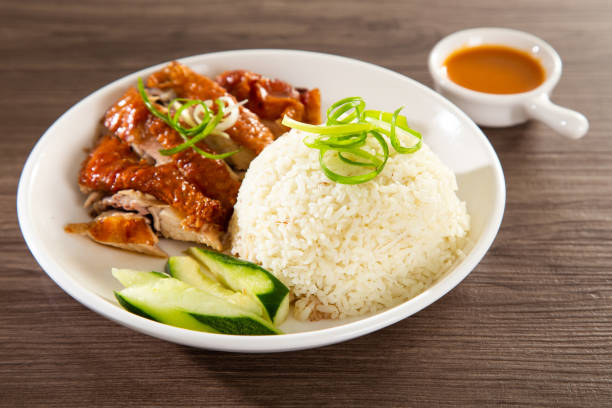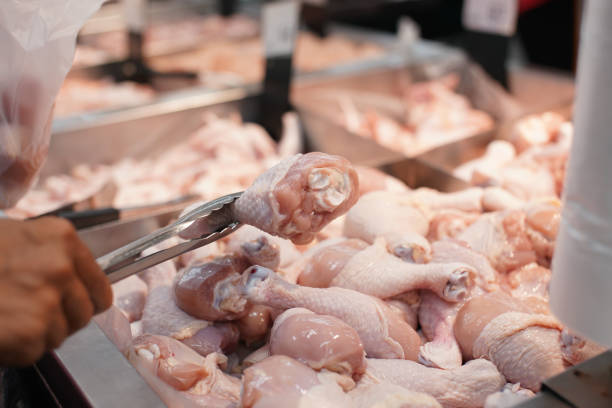Chicken is a popular protein source that is enjoyed by people all over the world. Whether you’re a meat lover or just looking for a healthy alternative to other types of protein, chicken is a good choice. One question that many people have when it comes to chicken is how many calories it contains.
To answer this question, it’s important to first understand what calories are and how they work in the body. A calorie is a unit of energy that is used to measure the energy content of food. When we eat food, our bodies use the calories it contains to fuel our activities and to maintain all of the body’s essential functions.
So, how many calories does chicken have? The answer to this question depends on a few different factors, including the type of chicken, the cooking method, and the portion size. Here’s a breakdown of the calorie content of different types of chicken:
Skinless, boneless chicken breast: One of the leanest cuts of chicken, a 3.5-ounce (100-gram) serving of skinless, boneless chicken breast contains about 165 calories.
Skinless chicken thighs: Chicken thighs are a bit higher in fat than chicken breasts, but they are still a good source of protein. A 3.5-ounce (100-gram) serving of skinless chicken thighs contains about 190 calories.
Skin-on chicken: If you prefer to eat chicken with the skin on, it will be higher in calories. A 3.5-ounce (100-gram) serving of skin-on chicken breast contains about 215 calories, while a serving of skin-on chicken thighs contains about 240 calories.
Fried chicken: Chicken that has been breaded and fried in oil is higher in calories than other types of chicken. A 3.5-ounce (100-gram) serving of fried chicken contains about 365 calories.
Rotisserie chicken: Rotisserie chicken is a convenient and tasty option, but it can be higher in calories than other types of chicken. A 3.5-ounce (100-gram) serving of rotisserie chicken contains about 230 calories.
It’s worth noting that these calorie estimates are based on raw, uncooked chicken. The calorie content of cooked chicken will depend on the cooking method. For example, grilling or baking chicken will result in fewer calories than frying it.
In addition to the type of chicken and the cooking method, the calorie content of chicken can also be affected by the portion size. It’s important to be mindful of portion sizes when it comes to any type of food, including chicken, to ensure that you’re getting the right amount of calories for your needs.
Now that we’ve looked at the calorie content of different types of chicken, let’s consider the role that chicken can play in a healthy diet. Chicken is a good source of protein, which is an essential nutrient that is important for building and repairing tissues, making enzymes and hormones, and supporting immune function. It’s also a good source of a variety of other nutrients, including niacin, vitamin B6, and phosphorus.
Now let’s consider some specific types of chicken dishes and how many calories they contain. A chicken Caesar salad, for example, can contain anywhere from 300 to 500 calories, depending on the size and toppings. A single serving of chicken Alfredo pasta can contain upwards of 800 calories, while a chicken burrito can contain around 500 calories.
It’s important to keep in mind that these are just rough estimates and the actual caloric content of a chicken dish will depend on the specific ingredients and portion sizes. To get a more accurate idea of how many calories are in a particular chicken dish, it’s best to refer to a nutrition calculator or look up the caloric content of the individual ingredients.
In summary, the number of calories in chicken can vary depending on the type of chicken, the way it is cooked, and whether it is consumed with the skin or without it. To reduce the caloric content of chicken, it is recommended to remove the skin before cooking and choose cooking methods that use minimal amounts of fat, such as grilling or roasting. The caloric content of specific chicken dishes can vary widely, so it is important to consider the ingredients and portion sizes when determining the caloric content of a particular dish.

 Home
Home Health
Health Diet & Nutrition
Diet & Nutrition Living Well
Living Well More
More












